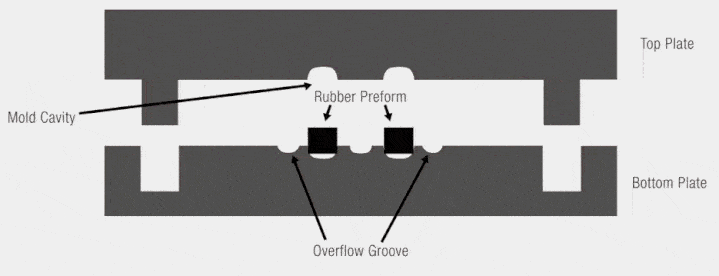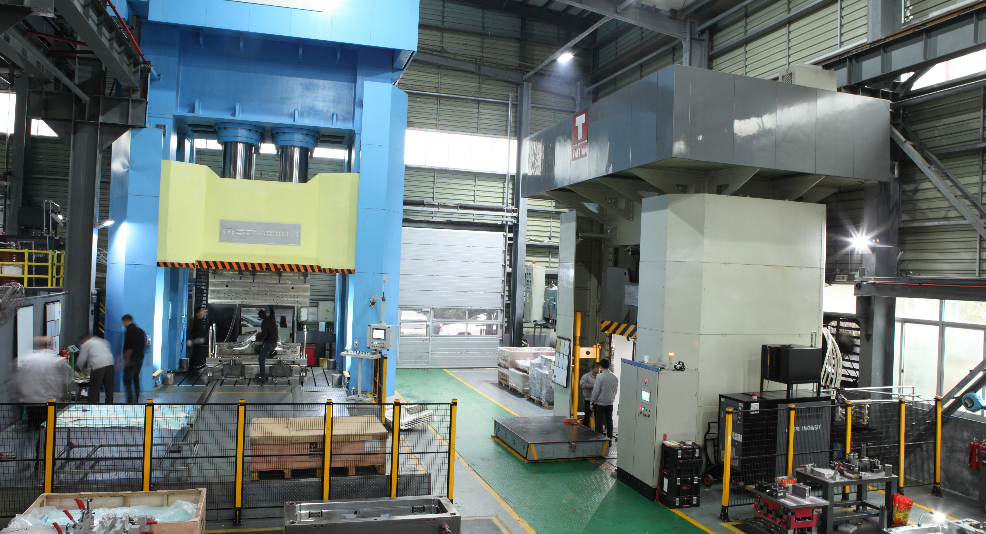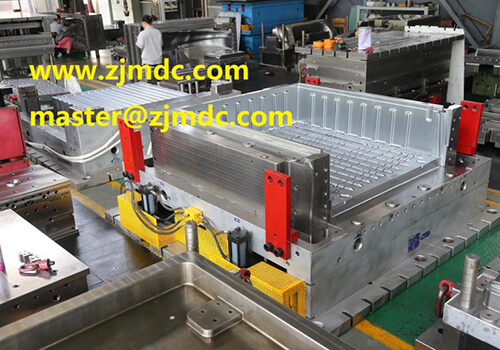Introduction
In the world of composite manufacturing, Sheet Molding Compound (SMC) plays a pivotal role due to its versatility, strength, and lightweight properties. The process of SMC compression molding requires precision and efficiency, which is where the integration of vacuum systems into press machines becomes crucial. This article delves into the significance of vacuum systems in SMC mold try-outs, exploring their benefits, operational mechanisms, and impact on the overall quality of the molded products.

The Role of SMC in Composite Manufacturing
Sheet Molding Compound (SMC) is a fiber-reinforced material used in compression molding. It consists of glass fibers, polyester resin, and various fillers and additives. SMC is known for its high strength-to-weight ratio, corrosion resistance, and ability to produce complex shapes. These properties make it ideal for automotive parts, electrical components, and various industrial applications.
The Compression Molding Process and Challenges
The SMC compression molding process involves placing the compound into a heated mold cavity and applying pressure to shape it. The mold is then cooled to solidify the material. However, achieving uniform material distribution and eliminating air entrapment are critical challenges in this process. Air pockets can lead to defects such as voids, incomplete filling, and weak spots in the final product.
Vacuum Systems: An Overview
A vacuum system in press machines for SMC compression molding helps in evacuating air from the mold cavity before and during the molding process. By creating a vacuum environment, these systems ensure that the SMC material fills the mold uniformly, without air entrapment. This results in higher-quality parts with fewer defects and better mechanical properties.

Benefits of Vacuum Systems in SMC Mold Try-Outs
Improved Product Quality
One of the primary benefits of using vacuum systems in SMC compression molding is the significant improvement in product quality. The elimination of air pockets ensures that the molded parts have a homogeneous structure, leading to enhanced strength and durability. This is particularly crucial for applications requiring high performance and reliability.
Enhanced Surface Finish
Air entrapment can cause surface imperfections such as blisters, porosity, and rough textures. Vacuum systems help achieve a smoother surface finish by ensuring that the material flows seamlessly into the mold cavity. This is essential for components that require aesthetic appeal and precision, such as automotive body panels and consumer electronics housings.
Increased Process Efficiency
Vacuum systems contribute to faster and more efficient molding cycles. By removing air from the mold cavity, the material fills the mold more quickly and evenly, reducing the time required for each cycle. This leads to increased productivity and cost savings, making the manufacturing process more economical.
Reduced Scrap Rates
Defects caused by air entrapment often result in rejected parts and increased scrap rates. With vacuum systems in place, the occurrence of such defects is minimized, leading to higher yield rates and less waste. This not only improves profitability but also aligns with sustainability goals by reducing material wastage.

Operational Mechanisms of Vacuum Systems
Vacuum Pump
At the heart of a vacuum system is the vacuum pump, which creates the necessary vacuum environment within the mold cavity. The pump removes air from the cavity, ensuring that the pressure inside is significantly lower than the atmospheric pressure. This negative pressure facilitates the even distribution of the SMC material.
Vacuum Lines and Valves
Vacuum lines and valves are integral components that connect the vacuum pump to the mold cavity. These lines must be airtight to maintain the vacuum environment effectively. Valves control the flow of air, allowing for precise regulation of the vacuum level during the molding process.
Control Systems
Modern vacuum systems are equipped with advanced control systems that monitor and adjust the vacuum level in real time. These systems ensure that the optimal vacuum conditions are maintained throughout the molding cycle, enhancing the consistency and quality of the molded parts.
Applications of Vacuum Systems in SMC Compression Molding
Automotive Industry
In the automotive industry, vacuum systems are crucial for producing high-quality components such as body panels, bumpers, and structural parts. The improved surface finish and mechanical properties achieved through vacuum compression molding contribute to the overall performance and aesthetics of vehicles.
Electrical and Electronic Components
SMC compression molding with vacuum systems is widely used in the production of electrical and electronic components, including enclosures, connectors, and insulators. The precise molding enabled by vacuum systems ensures that these components meet stringent safety and performance standards.
Industrial Applications
Vacuum systems are also employed in various industrial applications, such as the production of machinery housings, agricultural equipment parts, and construction materials. The enhanced strength and durability of SMC parts make them suitable for demanding industrial environments.
Conclusion
The integration of vacuum systems into press machines for SMC mold try-outs represents a significant advancement in composite manufacturing. These systems address critical challenges such as air entrapment, ensuring that the final products are of superior quality, with improved strength, surface finish, and consistency. As industries continue to demand higher performance and reliability from composite materials, the role of vacuum systems in SMC compression molding will remain indispensable. By investing in vacuum technology, manufacturers can achieve greater efficiency, reduce waste, and produce high-quality components that meet the evolving needs of various applications.